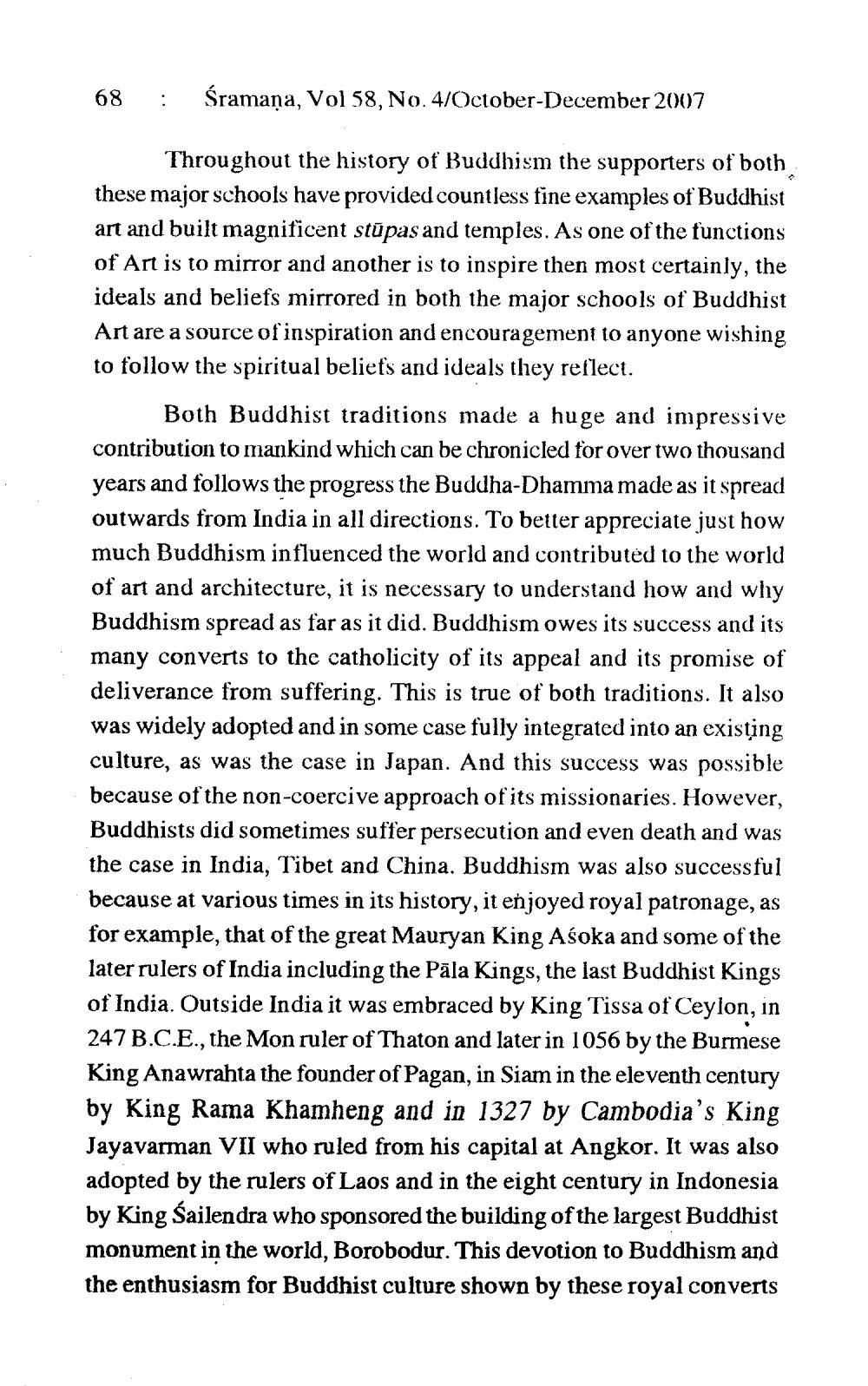________________
68
:
śramaņa, Vol 58, No. 4/October-December 2007
Throughout the history of Buddhism the supporters of both these major schools have provided countless fine examples of Buddhist art and built magnificent stūpas and temples. As one of the functions of Art is to mirror and another is to inspire then most certainly, the ideals and beliefs mirrored in both the major schools of Buddhis Artare a source of inspiration and encouragement to anyone wishing to follow the spiritual beliefs and ideals they reflect.
Both Buddhist traditions made a huge and impressive contribution to mankind which can be chronicled for over two thousand years and follows the progress the Buddha-Dhamma made as it spread outwards from India in all directions. To better appreciate just how much Buddhism influenced the world and contributed to the world of art and architecture, it is necessary to understand how and why Buddhism spread as far as it did. Buddhism owes its success and its many converts to the catholicity of its appeal and its promise of deliverance from suffering. This is true of both traditions. It also was widely adopted and in some case fully integrated into an existing culture, as was the case in Japan. And this success was possible because of the non-coercive approach of its missionaries. However, Buddhists did sometimes suffer persecution and even death and was the case in India, Tibet and China. Buddhism was also successful because at various times in its history, it enjoyed royal patronage, as for example, that of the great Mauryan King Aśoka and some of the later rulers of India including the Pāla Kings, the last Buddhist Kings of India. Outside India it was embraced by King Tissa of Ceylon, in 247 B.C.E., the Mon ruler of Thaton and later in 1056 by the Burmese King Anawrahta the founder of Pagan, in Siam in the eleventh century by King Rama Khamheng and in 1327 by Cambodia's King Jayavarman VII who ruled from his capital at Angkor. It was also adopted by the rulers of Laos and in the eight century in Indonesia by King Sailendra who sponsored the building of the largest Buddhist monument in the world, Borobodur. This devotion to Buddhism and the enthusiasm for Buddhist culture shown by these royal converts




